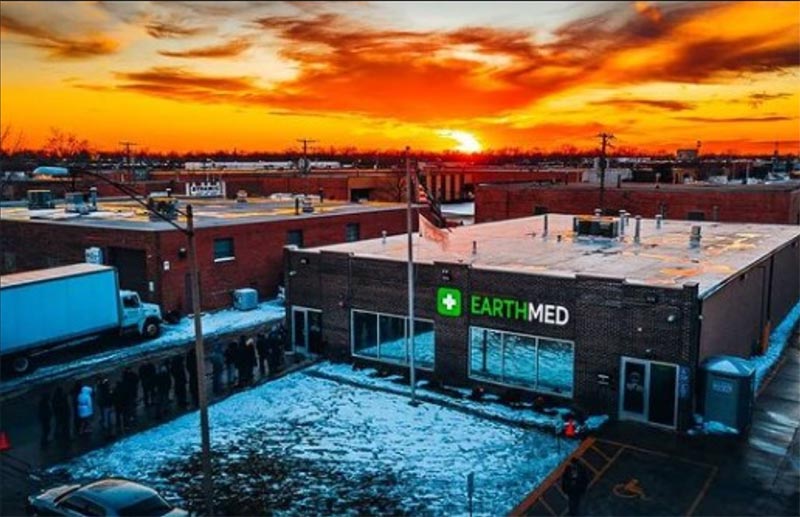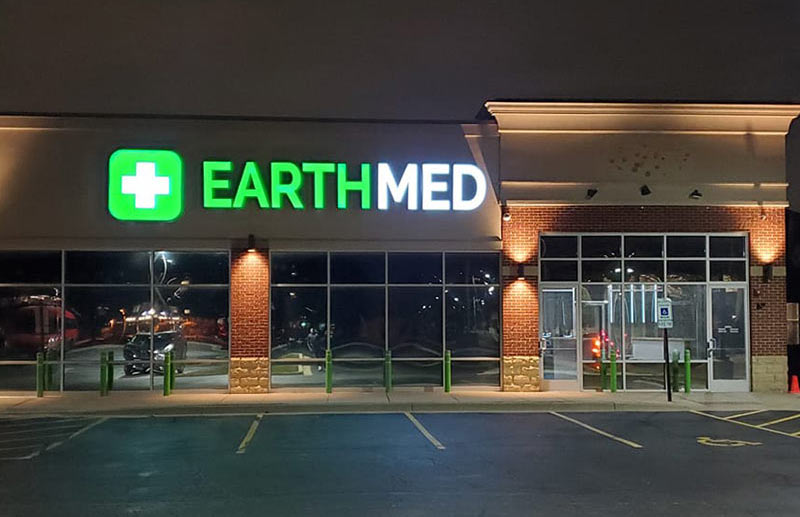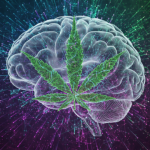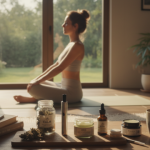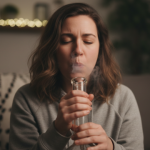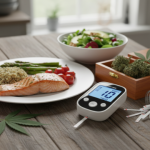Are you at least 21 years of age or hold a valid medical marijuana card?
Daily Specials
{{ special.title }}
{{ special.description }}
*{{ note }}EARTHMED BLOG

Understanding Lighting for Cannabis Growth
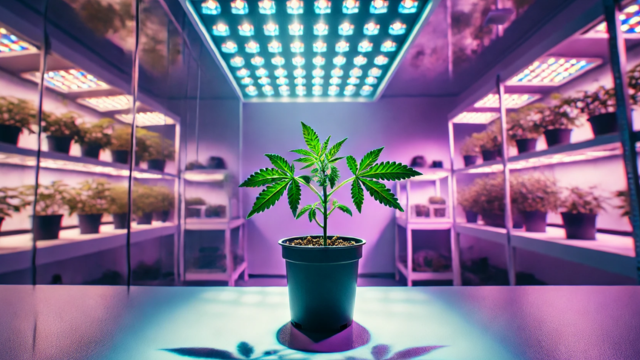
Whether for personal use or as a hobby, home cannabis cultivation has become increasingly popular, likely in part due to its cost-effectiveness. One of the most critical factors in successfully growing cannabis is proper lighting. Since cannabis is a light-hungry plant, understanding how to use grow lights effectively can make all the difference in plant health, yield, and potency. If you’re planning on setting up a growing station of your own, you’ve come to the right place!
Light Intensity
Proper lighting is one of the most important factors for healthy cannabis growth. Like many other plants, cannabis plants rely on light for photosynthesis. The intensity of light a plant receives is measured in Photosynthetic Photon Flux Density (PPFD). As seedlings, most cannabis plants only need 100-300 PPFD. During vegetation, it increases to 300-600 PPFD and up to 1000 PPFD while flowering. Keep in mind that too much light can cause stress or light burn, while too little light results in weak, stretched plants with lower yields.
Light Cycles
Cannabis is a photoperiod-sensitive plant, meaning its growth and flowering stages are triggered by changes in light duration. Seedlings might benefit from near-full light, but during the vegetative stage, 18 hours of light and 6 hours of darkness is usually preferred. During the flowering stage, the recommended amount of light decreases again at 12 hours of light and 12 hours of darkness. For auto-flowering cannabis strains, which are not dependent on light cycles to bloom, a consistent 18/6 or even 20/4 schedule is often used from seed to harvest.
Light Placement
How far away should grow lights be from the plants? The distance between your grow lights and plants depends on the type of lighting.
- Fluorescent lights should be 6-12 inches away
- HID (High-Intensity Discharge) lights should be 12-24 inches away
- LED lights should be 12-36 inches away, though it varies by wattage and intensity
Regularly monitoring for signs of light stress, such as curling leaves or slow growth, can help growers fine-tune their lighting setup.
Light Spectrum
Believe it or not, different wavelengths of light can influence cannabis growth. With that in mind, many experienced growers will adjust the wavelength of their light source at different stages of growth. For example, Blue Light (400-500nm) encourages compact, bushy growth and is ideal for the vegetative stage. Red Light (600-700nm) promotes stem elongation and flowering, making it crucial during the bloom phase. Full-spectrum grow lights, which mimic natural sunlight, are often preferred for new growers as they provide a balanced mix of wavelengths throughout the plant’s lifecycle.
Types of Grow Lights for Cannabis
Choosing the right indoor grow lights is essential for healthy cannabis growth and maximizing yield. Different types of grow lights offer varying benefits in terms of energy efficiency and heat output. As we just mentioned, the most common types of grow lights are Fluorescent, High-Intensity Discharge (HID), and Light-Emitting Diodes (LEDs). For beginners or small grows, fluorescent lights (CFL or T5) are great for starting plants. Fluorescent lights have a low heat output, are affordable, and are relatively easy to find.
For large indoor grows, HID lights will provide plenty of intensity. These powerful lights can penetrate deeply into the plants’ canopies, but also require ventilation. For energy efficiency and long-term use, LEDs have slowly risen up as the best option. Modern full-spectrum LEDs can support the entire cannabis life cycle, are highly energy-efficient, and run cooler than HIDs.
Common Lighting Mistakes
Even with the right cannabis grow lights, an improper setup can lead to poor plant health, low yields, or even plant death. Here are a few common mistakes that can hinder your weed’s growth.
- Causing Light Stress - When cannabis plants receive either too much or too little light, it can lead to various growth issues. Proper lighting is essential for healthy development, and any imbalance can negatively impact yield and potency
- Overheating Issues - Overheating is a common issue in indoor cannabis cultivation, especially when using high-intensity lights. If temperatures exceed 85°F (29°C) for extended periods, cannabis plants may suffer heat stress.
- Too Much Light During the Flowering Stage - During the flowering stage, cannabis plants require about 12 hours of light and 12 hours of uninterrupted darkness to trigger and maintain bud production. If they receive too much light, it can lead to delayed flowering or lower-quality buds.
- Uneven Light Distribution - If parts of a cannabis plant receive more light than others, it can lead to inconsistent growth. This can result in weak lower branches and lower overall yields. Consider using reflective materials, adding side lighting, or rotating your plants regularly to breach thick canopies.
Providing the right light is essential for growing healthy, high-yielding cannabis plants. From selecting the right light spectrum for each growth stage to maintaining an optimal light schedule, every detail matters. Nevertheless, with proper planning, lighting becomes a powerful tool to enhance growth for cannabis cultivators of all experience levels.
Do you grow your own cannabis indoors? Hit me up on social media, and let’s spark up a conversation about it
{{ locations[0].name }}
{{ locations[0].address }}{{ locations[0].city }}, {{ locations[0].state }} {{ locations[0].zip }}
{{ locations[0].phone }}
Hours
Sun: {{ locations[0].hours_recreational.Sunday }}Mon: {{ locations[0].hours_recreational.Monday }}
Tue: {{ locations[0].hours_recreational.Tuesday }}
Wed: {{ locations[0].hours_recreational.Wednesday }}
Thu: {{ locations[0].hours_recreational.Thursday }}
Fri: {{ locations[0].hours_recreational.Friday }}
Sat: {{ locations[0].hours_recreational.Saturday }}
{{ locations[1].name }}
{{ locations[1].address }}{{ locations[1].city }}, {{ locations[1].state }} {{ locations[1].zip }}
{{ locations[1].phone }}
Hours
Sun: {{ locations[1].hours_recreational.Sunday }}Mon: {{ locations[1].hours_recreational.Monday }}
Tue: {{ locations[1].hours_recreational.Tuesday }}
Wed: {{ locations[1].hours_recreational.Wednesday }}
Thu: {{ locations[1].hours_recreational.Thursday }}
Fri: {{ locations[1].hours_recreational.Friday }}
Sat: {{ locations[1].hours_recreational.Saturday }}
